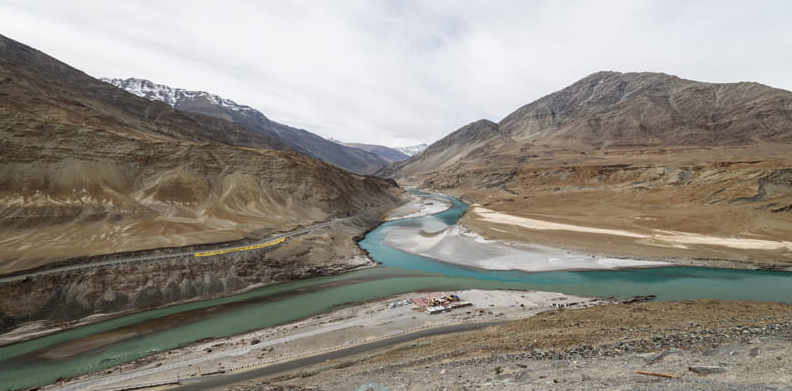A Bend in the River: Revisiting the Indus Waters Treaty (GS Paper 1, Geography)

Context
- The 1960 Indus Waters Treaty (IWT) between India and Pakistan is a significant transboundary water-sharing mechanism.
- Despite its historic importance, disagreements persist.
- Recently, India called for amendments to the treaty, expressing dissatisfaction with the dispute resolution process and accusing Pakistan of “intransigence” and material breaches.
- Pakistan sought arbitration at The Hague over India’s Kishenganga and Ratle hydroelectric projects, bypassing treaty-compliant Neutral Expert proceedings.
What is the Indus Waters Treaty?
- India and Pakistan signed the IWT in September 1960 after nine years of negotiations, with the World Bank being a signatory to the pact.
- The treaty sets out a mechanism for cooperation and information exchange between the two sides on the use of the water of the Indus River and its five tributaries: Sutlej, Beas, Ravi, Jhelum, and Chenab.
Changing Realities and the Need for Amendments
- Emerging realities, particularly climate change, necessitate revisiting the treaty.
- In 2015, NASA ranked the Indus basin as the world’s second most over-stressed aquifer.
- Approximately 31% of the net basin flow originates from climate-impacted glaciers and snowmelts, leading to more volatile and seasonal mean annual flows.
- Unpredictable monsoons further increase flow variability.
- Given the crucial role of the Indus in the agriculture-dominated economies of India and Pakistan, these changes pose significant challenges.
- Over 90% of Pakistan’s agricultural output depends on the Indus, and deteriorating water quality threatens food and nutritional security, human health, and biodiversity.
Contentions and Trust Deficits
- Disagreements within the IWT framework primarily revolve around infrastructure development impacts on downstream flows.
- Pakistan, as a lower riparian state, expresses concerns over projects like India’s Shahpurkandi barrage, accusing India of “water terrorism.”
- However, the Ravi’s water flow into Pakistan is minimal, and the dam aims to streamline the river’s flow, supporting power supply and agricultural growth within legal IWT limits.
- The massive trust deficit between the two neighbors exacerbates these issues.
Ecological Perspectives and Environmental Flows
- There is a need to integrate an ecological perspective into the treaty’s governance framework, including institutionalizing Environmental Flows (EFs).
- According to the Brisbane Declaration, EFs are essential to sustain aquatic ecosystems, supporting human cultures, economies, sustainable livelihoods, and well-being.
- Harmonizing EFs with principles from the 1997 UN Watercourses Convention, such as equitable and reasonable use and the duty to prevent significant transboundary harm, is crucial. International customary law, including the 2004 Berlin Rules on Water Resources, supports these concepts.
- The Permanent Court of Arbitration’s 2013 verdict on India’s Kishanganga project underscored the obligation to release EFs downstream, setting a precedent for maintaining EFs in transboundary river basins.
Addressing Climate Change and Population Pressures
- A nuanced understanding of climate-change impacts and population pressures on river hydrology is essential.
- Developing a mechanism for real-time data sharing between the two riparians and evaluating water quality and changing flow magnitudes in numeric terms can help.
- A legally binding, World Bank-supervised data-sharing framework within the IWT would ensure accountability and enhance policy understanding of water-quality challenges.
Re-establishing the Treaty in the Face of Climate Change
- Recognizing climate change as a common vulnerability and shifting focus to holistic basin management can reinforce the treaty’s significance in Indo-Pak relations.
- Such an approach would address emerging challenges effectively and ensure sustainable water resource management for both countries.
Conclusion
- The Indus Waters Treaty has long served as a cornerstone for water resource management between India and Pakistan.
- However, the changing climate and growing population pressures necessitate a revisitation and possible amendments to the treaty.
- Integrating ecological perspectives, addressing trust deficits, and enhancing real-time data sharing can help both nations manage their water resources more effectively.
- Ultimately, re-establishing the treaty with a focus on climate resilience and cooperation will be crucial for the sustainable development of the Indus basin.


